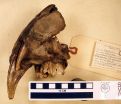End pharmacists' monopoly on selling certain drugs, argues expert
A 2-tier system of prescription or non-prescription, as in the US, drugs would be simpler
2015-07-02
(Press-News.org) Evidence is lacking that having a category of drugs that can be sold only by pharmacists or under their supervision ("pharmacy medicines") has benefits, writes a pharmacy professor in The BMJ this week.
Professor Paul Rutter at the School of Pharmacy, University of Wolverhampton, calls for an end to pharmacists' monopoly on selling some drugs and thinks that a two tier system of prescription or non-prescription drugs, like in the US, would be simpler.
He mentions the recent case of the painkiller, oral diclofenac, that used to be available as a non-prescription drug sold exclusively under the direction of a pharmacist. In January 2015, the UK drugs regulator (MRHA) announced that it would revert to a prescription-only drug "because of a small but notably increased risk of cardiovascular side effects."
This implies that, even with this system of restricted availability, "doubt exists that pharmacists (and their staff) can supervise sales to consumers appropriately," writes Rutter.
Given this decision, should any drugs still be restricted to sale only with a pharmacist's supervision, he asks?
Some may argue that the pharmacy medicines category helps pharmacists in the community to help patients care for themselves, thereby reducing doctors' workloads, adds Rutter. "But does their four to six years of drug training mean that they should have a monopoly on selling some drugs?" he writes.
Furthermore, if pharmacy is to hold a monopoly on selling some medicines it needs to show value to consumers in terms of health outcomes, when compared with consumers purchasing these drugs without restriction, he argues.
He points out that in the UK in the past four years just three drugs were switched from prescription-only control to pharmacy medicine status, but 12 pharmacy medicines were switched to general retail sale.
Without credible evidence to support the pharmacy medicines monopoly - namely, that pharmacy intervention improves patient outcomes - "it is only a matter of time before a two tier system of prescription or non-prescription drugs becomes the standard model, as in the US," argues Rutter.
Such a system, he concludes, is easy to understand: access to medicines is obtained either with a prescription or from any retail outlet. "This is less confusing for consumers and increases accessibility, but it still allows pharmacies to sell drugs and gives them a chance to demonstrate their worth."
INFORMATION:
ELSE PRESS RELEASES FROM THIS DATE:
2015-07-02
Diabetes research is dominated by a small group of prolific authors, raising questions about the imbalance of power and conflict of interests in this field, argue experts in The BMJ this week.
In a new study, Frits Holleman and colleagues searched PubMed for all randomised controlled studies (RCTs) on glucose lowering treatments for diabetes from 1993 to 2013.
In total, they identified 3,782 articles with 13,592 authors.
The top 110 authors were named in a third (32.4%) of all articles, and they authored 991 RCTs, equivalent to 20 RCTs per author.
Of these 110 ...
2015-07-02
Philadelphia -- Elias S. Siraj, M.D., FACP, FACE, director of the Diabetes Program at Temple University Hospital (TUH), and Kevin J. Williams, M.D., FACP, chief of endocrinology, diabetes and metabolism at TUH, co-authored an editorial piece published July 2 in the New England Journal of Medicine about a major weight loss study involving obese and overweight patients.
Siraj and Williams offered their take on the significance of the randomized, double-blind clinical trial that showed a daily injection of 3.0 mg of the drug liraglutide, when given as an adjunct to diet ...
2015-07-02
Scientists have identified a group of genetic mutations in patients with aplastic anemia, which likely will help doctors optimize treatment for this rare and deadly blood condition. The study, appearing in the New England Journal of Medicine, could lead to tailor-made treatment plans for aplastic anemia patients as part of the emerging precision medicine movement. It is the largest study of its kind to examine gene mutations in aplastic anemia, the scientists note.
The work involved researchers from the National Institutes of Health, the Cleveland Clinic, Cleveland, ...
2015-07-01
DALLAS, July 1, 2015 -- While menopause is commonly considered a risk factor for heart disease, menopausal women had a lower risk of dying from heart attack than men; however, this difference was less pronounced among blacks, according to research in the Journal of the American Heart Association.
In the first study to compare men and women and how menopause types impact risk of heart attack, researchers studied 23,086 black and white adults over age 45 and found:
White women who had surgical-induced menopause had a 35 percent reduced risk of non-fatal heart attacks ...
2015-07-01
As we walk along a forest path, the soil beneath our feet seems like a uniform substance. However, it is an intricate network of soil particles, pores, minerals, soil microbes, and more. It is awash in variety.
Soil is a living, dynamic substance, and the microbial life within it is crucial to providing plant life with the food they need to grow. The microbes can be bacteria or fungi, but both need space--the pores--for a good living environment.
Soil particles that clump together are aggregates. These are the architectural building blocks of soil. Their presence ...
2015-07-01
Alexandria, VA - Analyzing thousands of records, researchers have reinforced the claim that for marine life, bigger has been better for the last 542 million years. The study examined Cope's rule - the idea, named for paleontologist Edward Drinker Cope, that species evolve to larger sizes over time.
With the help of undergraduate students and high-school interns, the researchers compiled information on five major marine phyla, including arthropods, brachiopods, chordates, echinoderms and mollusks. Find out how much bigger things got in the June issue of EARTH Magazine: ...
2015-07-01
New research shows that the fearsome teeth of the saber-toothed cat Smilodon fatalis fully emerged at a later age than those of modern big cats, but grew at a rate about double that of their living relatives. The findings, published today in the journal PLOS ONE and based on a new technique that combines isotopic analysis and x-ray imaging, for the first time provide specific ages for developmental events in Smilodon, notably in their teeth. The study estimates that the eruption rate of S. fatalis's permanent upper canines was 6 millimeters per month--double the growth ...
2015-07-01
Statins are a hugely popular drug class used to manage blood cholesterol levels and reduce the risk of heart disease. Previous studies had raised questions about adverse behavioral changes with statins, such as irritability or violence, but findings with statins have been inconsistent. In the first randomized trial to look at statin effects on behavior, researchers at the University of California, San Diego School of Medicine report that aggressive behavior typically declined among men placed on statins (compared to placebo), but typically increased among women placed on ...
2015-07-01
A newly-discovered, 48-million-year-old fossil, known as a "Jesus lizard" for its ability to walk on water, may provide insight into how climate change may affect tropical species, according to a study published July 1 in the open-access journal PLOS ONE by Jack Conrad from American Museum of Natural History.
Modern relatives of the Jesus lizard live in an area stretching from central Mexico to northern Colombia, flourishing in the higher temperatures found at the equator. Members of various animal, plant, fungal, and other clades currently confined to the tropics or ...
2015-07-01
An international team of researchers has found some of the first solid evidence that narcolepsy may be a so-called "hit-and-run" autoimmune disease.
The researchers sought to determine why, of two different flu vaccines widely deployed during the 2009 swine flu pandemic, only one was associated with a spike in the incidence of narcolepsy, a rare sleep disorder.
A paper describing their findings will be published July 1 in Science Translational Medicine. Lawrence Steinman, MD, a professor of pediatrics and of neurology and neurological sciences, is the senior author. ...
LAST 30 PRESS RELEASES:
[Press-News.org] End pharmacists' monopoly on selling certain drugs, argues expert
A 2-tier system of prescription or non-prescription, as in the US, drugs would be simpler

